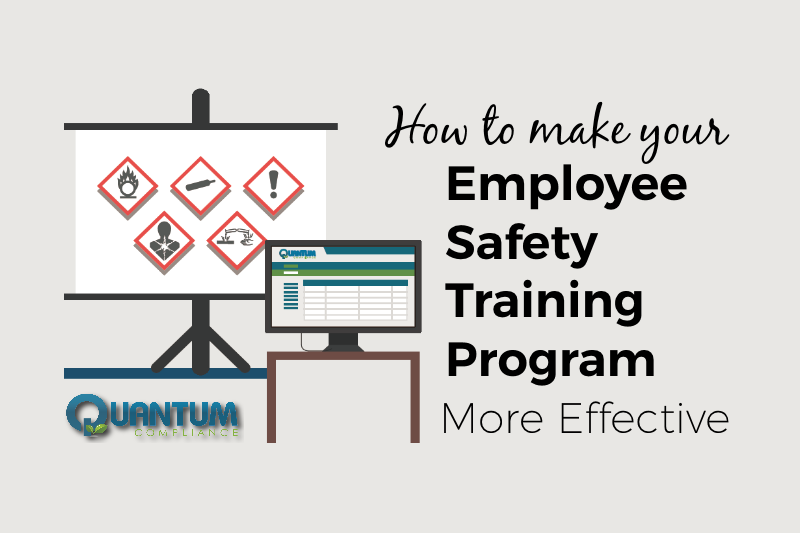 Since safety programs are necessary for a well-run and compliant workspace, your employees must be routinely trained in order to make sure that these programs are implemented to their fullest potential. Training is quite literally providing life-or-death information, there’s no conscientious way to avoid getting this information out to every worker at your company. Unfortunately, most workers are not interested in disrupting their day to attend new training sessions, so you have to find a way to make your training programs as efficient and effective as possible.
Since safety programs are necessary for a well-run and compliant workspace, your employees must be routinely trained in order to make sure that these programs are implemented to their fullest potential. Training is quite literally providing life-or-death information, there’s no conscientious way to avoid getting this information out to every worker at your company. Unfortunately, most workers are not interested in disrupting their day to attend new training sessions, so you have to find a way to make your training programs as efficient and effective as possible.
Incorporate Virtual Simulations Into Your Safety Training
One potential way to improve overall attendance at and ensure your employees retain crucial information from your safety training sessions is through virtual simulations. As workers move through a simulation, they get to actively interact with new tools or skills. This helps them get a feel for the technology or new regulation at hand and has the added benefit of reducing all real-life hazards. The virtual aspect also makes the training feel like an interactive video game, which helps workers to engage and more fully enjoy the entire process.
Another benefit of virtual simulations is their repeatability. Because there are no active hazards involved in the virtual training simulations, workers can go back and retry the process at hand in many different ways, testing to see how they best can go about managing new safety strategies without fear of harm. This is also incredibly useful in that practice will reinforce the new tactics each time a worker uses them to make safe decisions.
Don’t Forget The Verbal or Written Parts of Safety Training
When planning your safety training programs, it is also important to make sure that all information is communicated clearly. While a virtual training program is excellent for its hands-on activities, the verbal or written parts of the safety training must be easily communicable and understood. This means that the writing should be checked several times for clarity and presented in an easy to read and/or easy to understand when listened-to format, and also that you should take your workers’ unique learning needs into account.
Multilingual Safety Training Courses for Your Diverse Workforce
One key part of promoting understanding is making sure that training is available in multiple languages, so that any current and future workers who speak English as a second language can look at safety instructions in their native tongues so as to understand the information more fully. According to the Bureau of Labor Statistics, 15.4% of all employed workers in the United States are of Latino heritage and 66% of total workplace fatalities for Latinos befell foreign-born workers. This does not by any means indicate that these workers will not understand information presented in English, but making the safety instructions available in Spanish, for example, will help those not born in the United States to comprehend the information at hand in a more natural way. OSHA provides many of its training guides in Spanish, Korean, and Portuguese, among other languages, and has a specific guide to Spanish-language training programs available online.







